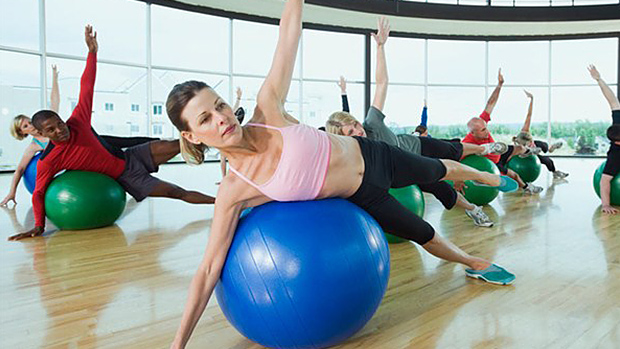
NOTE- This article was written by me for Franchise India & was published on 17th August 2017. Read on…
The latest buzzword in the fitness industry- “Functional Fitness” has caught on with all the gym enthusiasts. With more and more people using Functional Training, it is definitely the most hyped workout craze today. But what does the term “Functional Fitness Training” really mean?
What is Functional Fitness Training?
Functional as the word suggests is Practical, Useful, Occupational, Utilitarian. To have more strength, stamina, efficiency in your daily movements is essentially what Functional Fitness is. The ability to do everyday tasks – walking the stairs, carrying groceries, lifting luggage at the airport, picking up your baby off the floor- without becoming fatigued. Functional Fitness Training, thereby, involves exercises that have a high carryover to work & daily living activities.
Looking at exercises as “Functional” and “Non-functional”? – What does research say?
A lot of concepts are being promoted as to how to achieve fitness that is functional which are unfortunately, not in sync with the scientific study & research papers. Let us dispel some of the popular myths & delve into the facts of Functional v/s Non-Functional Training.
Myth 1# Exercise Machines are “non-functional” training implements
It is widely accepted that lifting a certain amount of weight in an idealized posture created by a gym machine does not focus on building a body capable of doing real-life activities in real-life positions.

Fact 1 # A study to evaluate the effects of strength training on functional capability recruited elderly people (90 years & above) and trained them exclusively on a leg extension machine, three days/ week. After eight weeks of resistance machine training, the subjects increased their lower body strength by 175% and their functional scores on a test of walking and balance improved by approximately 48%. Out of the ten participants, two of them were also able to walk without the assistance of their canes!
Though dismissed by functional training proponents as “non-functional”, the study shows that exercise machine training does improve functional performance enormously. Central to the design of any fitness program is the principle of specificity, hence free weights will tend to promote better results because they more closely approximate the way functional tasks are performed. But working out on exercise machines also result in functional improvements big time.
Another important point is that for those who are starting out with a low fitness level and/or are deconditioned, may be machine training is all that is required to sufficiently improve their efficiency of carrying out activities of daily living (ADL), thereby improving their functionality. Using principles of exercise science- Structured, Scientific, Progressive, they could then be gradually introduced to free weights exercise that would challenge their body in three-dimensional space.
Therefore, it can be misleading to refer to exercise as either “functional” or “non-functional”. As a matter of fact, there is no exercise that is “non-functional”. Some exercises could be more functional than others depending on the individual, his fitness level, his goals and his functional task requirements.
Myth 2# Unstable surface training increases functional fitness
Unstable surface training involves training that uses implements like BOSU, wobble boards, foam rollers, stability balls, balance discs etc. The idea is to induce instability using these devices during workouts. Exercising on unstable surfaces challenge neuromuscular pattern, and hence they are thought to produce greater improvements in functional performance.

Fact 2# The majority of the population hitting the gym for functional training are everyday people with very modest task requirements. Their goals usually vary from weight loss to staying healthy and looking fit.
Also, what we need to remember is that during our work or daily life, most of all our tasks are conducted on stable surfaces- stable terrain, roads, floors, table, desks etc. Therefore, applying the principle of specificity, it makes sense to train mostly on stable surfaces as it will lead to maximal and optimal functional transfer- the most benefit for daily use.
Also, the loss of ability to perform everyday tasks is primarily due to loss of muscle strength. Therefore, simply increasing our muscle strength will promote better functional capacity. Stable surface training (for e.g. bench press) increases strength to a greater degree than comparable exercises performed on unstable surfaces (for e.g. chest press on a stability ball), thereby making a strong case for prioritizing stable surface to unstable one, from a functional standpoint.
Though research shows benefits of unstable surface training in rehabilitation of injuries & in core training, there are studies done that conclude that for general population & athletes, functional improvements are best achieved when a majority of training is carried out on stable surfaces.
Hence, choosing to work out on a particular equipment or with a particular device is not about being “functional” or not, but exercise routines & choice of equipment should be largely matched to an individual’s needs, abilities, requirements and goals.
Summary
Bottom line is that we need to put an end to categorizing exercises as “functional” or “non-functional” and realize that for most practical purposes all exercises can produce improvements in functional abilities. No exercise is bad. Each exercise is composed of “bio-motor” or “life-movement” abilities. These “bio-motor” abilities are strength, power, endurance, flexibility, coordination, balance, agility and speed. Its about taking a broad base approach & adhering to a well rounded & comprehensive training routine depending on task requirements, functional goals, individual current abilities, needs etc. This may be achieved through any type (or combination) of resistance training, whether it be machines, cables, balls, bands, body weight or free weights and anything that is going to deliver the desired results, using the principles of science- Specificity, Structured, Scientific and Progressive.
REFERENCES:
1. “Functional Fitness”: For Real or Just Fantasy? – American College of Sports Medicine (ACSM)
2. Is Functional Training Really Functional?- Schoenfeld,B. ACSM Certified News
Image credit: Franchise India.com/ Google Images
